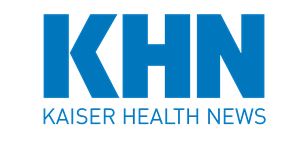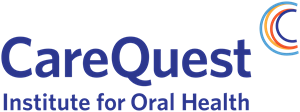
It’s been a rough couple of years for the Centers for Disease Control and Prevention. Facing a barrage of criticism for repeatedly mishandling its response to the covid-19 pandemic and more recently monkeypox, the agency has acknowledged it failed and needs to change.
CDC Director Dr. Rochelle Walensky has tapped Mary Wakefield — an Obama administration veteran and nurse — to helm a major revamp of the sprawling agency and its multibillion-dollar budget. Making the changes will require winning over wary career CDC scientists, combative members of Congress, and a general public that in many cases has stopped looking to the agency for guidance.
“If she can’t fix it, she’ll say, ‘It’s not fixable, here’s why, and here’s what needs to be done next,’” said Eileen Sullivan-Marx, dean of the New York University Rory Meyers College of Nursing, who has known Wakefield professionally for decades.
Other former colleagues said Wakefield’s experience as a nurse, congressional staffer, policy wonk, and administrator give her the perspective and leadership tools to rise to the occasion, even as they acknowledged the magnitude of the job ahead.
“She has high standards, and she’ll expect people to perform,” said Brad Gibbens, a former employee and the acting director of the Center for Rural Health at the University of North Dakota School of Medicine and Health Sciences. “She’s very fair, but you need to know what you’re doing.”
Wakefield will have to navigate rough waters in the wake of a series of missteps by the agency. The CDC botched the covid testing rollout early in the pandemic, issued confusing guidance on prevention measures such as masking and quarantining, and has been slow to release scientific findings on the fast-moving coronavirus.
Walensky has stressed that, as part of the reset, she wants the CDC to give Americans clear, accurate, and timely guidance on community health threats.
“I am confident that the appointment of Mary Wakefield will be instrumental in accomplishing our goals to modernize and optimize CDC,” Walensky said in a written statement. “It is clear that Mary is an action-oriented leader who can lead effective change.”
Following an internal audit, Walensky announced plans to restructure how the agency communicates with the public, to eliminate bureaucratic redundancies, and to help the CDC better interact with other parts of the federal government.
Wakefield’s first day on the job was in mid-August. She declined to speak to KHN for this article, but those who know her painted a rich picture of her management philosophy and style.
NYU’s Sullivan-Marx said Wakefield’s experience as a nurse makes her well suited to solve the complex set of problems facing the CDC, which she compared to a patient in need of stabilization.
“When you look at someone in a bed in intensive care, all you see are beeps and lines and monitors going off — people moving in and out like a train station,” said Sullivan-Marx. “The nurse is central to that for the patient, pulling all of that together.”
Sullivan-Marx also said Wakefield’s perspective as a front-line health care worker could help the CDC better understand how clinicians will receive and interpret its guidelines and recommendations.
For most of the Obama administration, Wakefield led the Health Resources and Services Administration. HRSA, a division of the Department of Health and Human Services, is responsible for a wide portfolio of programs — those that serve people living with HIV, provide compensation for people injured by vaccination, and document disciplinary action against health care providers.
Former HHS Secretary Kathleen Sebelius called Wakefield a “change agent” who was able to win the trust of HRSA staff members, many of whom are full-time employees, not political appointees.
“Folks understood that they were there before she came in and they’d be there after she left,” Sebelius said. “They had to be convinced that she was a good leader and they were going to follow her. That’s pretty significant, that she did so well in that agency.”
(Sebelius is a member of KFF’s Board of Trustees. KHN is KFF’s editorially independent newsroom.)
Sebelius said such experience could be helpful to Wakefield at the CDC, which employs just over 12,000 people, some of whom could be skeptical of changes. Covid was a serious stress test for the CDC, leaving some staffers wondering if it had lost its way.
Sebelius also noted as a plus Wakefield’s experience working with the CDC as acting deputy secretary of HHS. She was nominated to be deputy secretary but never confirmed because of political squabbles over abortion.
Details about changes coming at the CDC are still trickling out, though top brass have said they’ll need the support of Congress to implement them.
Sheila Burke, head of public policy at the law firm Baker Donelson, got to know Wakefield while working in Congress. She said Wakefield’s experience on Capitol Hill will come in handy when dealing with lawmakers who sit on committees that oversee the CDC.
“She’ll be keenly aware of the role of the members who care deeply about these issues,” Burke said.
Top health officials have had a hard time justifying the federal government’s pandemic response to certain members of Congress. Walensky and Dr. Anthony Fauci, the Biden administration’s lead medical adviser, who will soon step down, faced intense questioning from legislators on several occasions.
“I think she’s uniquely positioned to understand how you navigate that relationship,” Burke said of Wakefield.
Multiple former employees pointed to what Gibbens, from the University of North Dakota, characterized as Wakefield’s “infatigable amount of energy.” He said it wasn’t uncommon for him to arrive at work to phone messages she’d left him at 4:30 in the morning.
He described Wakefield as someone who knows “when somebody is trying to play her.” But he also said she doesn’t take herself too seriously. He recalled a kitschy animatronic singing fish on her office wall, a nod to her love of fishing. And the time she declined to fly on Air Force Two from Washington, D.C., to North Dakota, choosing to take a commercial flight “like a regular person.”
“She said, ‘You gotta be really careful with that stuff. You don’t want to get used to that,’” Gibbens recalled.
The work ahead for Wakefield could be a stress test of her belief in the human value of public policy. Walensky has said the changes she hopes to implement at the CDC won’t happen overnight, and it’s likely they won’t be easy.
Much like the CDC in the current moment, in 2005 Wakefield found herself at a possible turning point. That year, Wakefield’s brother and two of his children were killed in a car accident that seriously injured her sister-in-law and young nephew.
“Health policy as a focal area of my work before, now felt of very little consequence,” Wakefield wrote at the time in the Journal of Forensic Nursing.
Then she received word that her former boss, Sen. Kent Conrad (D-N.D.), had joined with others to introduce the Wakefield Act, a bill aimed at improving emergency medical care for kids. Even though it didn’t pass, it reminded Wakefield that pulling the levers of government can have real-life consequences.
“They acknowledged my family’s loss and put their support behind legislation that can affect the lives of children of other families who may have a chance at survival,” Wakefield wrote. “Public policy is important — isn’t it?”

 The CareQuest Institute for Oral Health recently published “Actions You Can Take to Advance Anti-Racism in Dentistry.” Racism is a public health epidemic. Across the US, there are barriers to care that have blocked people of color from receiving adequate health care for years. A recent webinar brought oral health leaders together to focus on the topic and make plans to break down barriers moving forward, including seven actions to help advance anti-racism.
The CareQuest Institute for Oral Health recently published “Actions You Can Take to Advance Anti-Racism in Dentistry.” Racism is a public health epidemic. Across the US, there are barriers to care that have blocked people of color from receiving adequate health care for years. A recent webinar brought oral health leaders together to focus on the topic and make plans to break down barriers moving forward, including seven actions to help advance anti-racism.